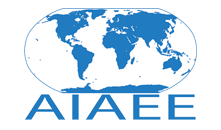Keywords
Haiti; agricultural education; Caribbean; social capital; university
Abstract
The purpose of this research was to identify how teaching at multiple institutions impacts social capital of faculty within the Haitian AET system. Putnam’s social capital framework was used in the current study. Social capital is developed based on relationships with others. Bonding social capital is homogenous; bridging social capital is heterogonous; linking social capital connects an individual with external resources. A mixed methods approach was used in order to accomplish the study’s objectives. Results from the quantitative portion of this research showed a low positive association between teaching at multiple institutions and bonding social capital. Similarly, a moderate positive association between teaching at multiple institutions and linking social capital was found. Conversely, data showed a negligible negative association between linking social capital and teaching at multiple institutions. The qualitative portion of this research showed that most educators were optimistic about teaching at various institutions; however, faculty indicated teaching at multiple institutions did not translate directly into an increase in their social capital. In fact, teaching at multiple institutions only increased the demands on their time caused by having multiple appointments. It is recommended that universities invest in platforms and strategies to increase faculty’s social capital. From a theoretical perspective, this research applies social capital theory in a new context. This research may also have value to development researchers working with higher education faculty in other countries.
Rights Statements
This Item is protected by copyright and/or related rights. You are free to use this Item in any way that is permitted by the copyright and related rights legislation that applies to your use. For other uses you need to obtain permission from the rights-holder(s).
Recommended Citation
Albert, B.,
Roberts, T. G.,
&
Harder, A.
(2018).
Social Capital of Faculty within Haiti’s Agricultural Education and Training System.
Journal of International Agricultural and Extension Education, 25(3), 29-42.
DOI: https://doi.org/10.5191/jiaee.2018.25203



